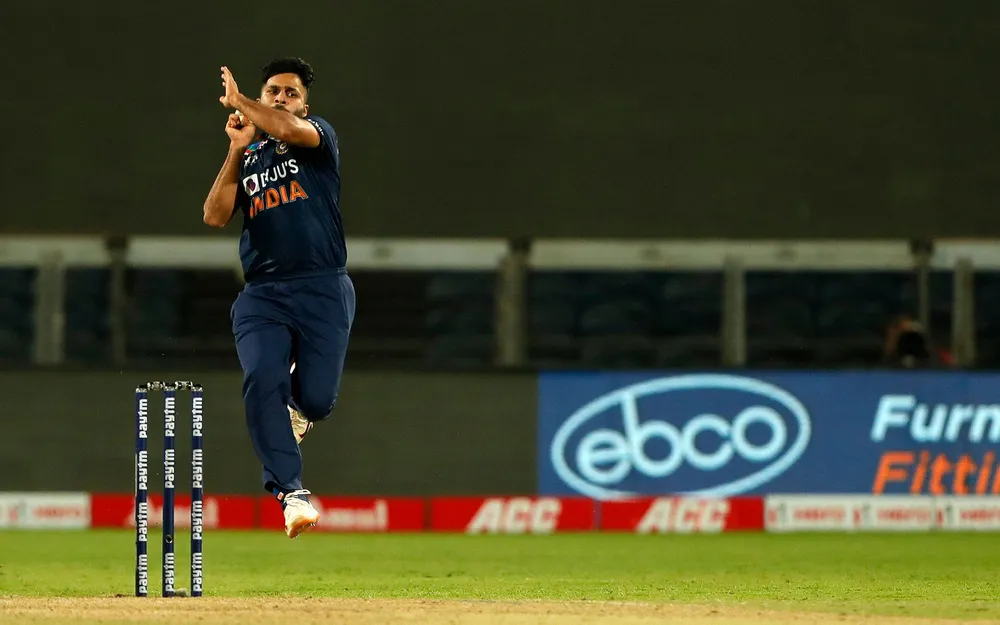IND vs ENG | 3rd ODI Takeaways - A tale of Rohit Sharma’s leg-spin counter and Shardul’s character
They say, “strike regularly in an ODI match to bag the game before it drifts away” and India exactly did that even though the death over batting let them down in rare situation. A game that went really close, India eventually secured a 7-run win to bundle the series 2-1 defying a brave Sam Curran.

Rohit Sharma and the chasm of leg-spin
In ODI cricket since the start of 2017, Rohit Sharma averages 68.8 against leg-spinners with a strike rate of 109.0 and was dismissed only six times from 24 matches. This is a regulation Rohit batting performance and an average just shy of 70 tells you that. Thus maybe Rohit struggling against leggies in the T20s have been mixed in the ODIs to create a perception of sorts but there is a story to be told if we look at today’s dismissal in isolation. Rohit played for the leg-spin but was deceived by the googly, leaving a huge gap between bat and pad - evident self-doubt that has made him a prime LBW contender against leggies in the IPL in the last few years.
However, that brings a question is the problem lies with picking the ball from the release point or the eagerness to react. Adil Rashid is not a Rashid Khan who bowls googlies for lunch, breakfast, and dinner. According to Star Sports broadcast, he bowls only 19% of googlies, which honestly is a fairly high number, but that is only 1 in 6 balls, averaging to 10 googlies in a 10-over quota. If picking them from the hand was a problem, Rohit would naturally go for the leg-spin, while guarding himself against the chance. It might be a technique fraught with danger but a fairer one in the context.
Shardul - always up for a fight
Shardul Thakur is quite a character. He might not be the most talented pacer coming from the current Mumbai stable, but the zeal to fight on and make his presence felt has been extra-ordinary. Be it the cameos he played in the 2019 season to cement his limited-overs place or the fighting knock in Brisbane, he has ensured a cult of his own. This England limited-overs series, both T20Is and ODIs, have seen Shardul coming to terms with the demands of the side as well as being comfortable in his own skin.
His impact as a bowler has been documented over the course of the last few months, but what sticks out was the audacity. Bhuvneshwar Kumar is a safe batsman, one who can rebuild an innings after a collapse, but the team needed a pinch-hitter, someone like Nuwan Kukasaekara used to do for Sri Lanka, and Thakur did his part. With Krunal Pandya struggling for runs at the other end, Thakur’s 21-ball 30 was the real difference between India shutting down for a below 300 score to what they eventually finished with. It is this trait that will make him valuable to the setup in the long run and if he can continue the bowling subsidence, rest assured, we are seeing a good long run for the “Lord”.
The magic of good length on flatbeds
In India, if you are a pacer and want to be successful, mixing up your length and pace is not always the option. Going full would help only if it is backed by accuracy, short balls have their own merits and demerits but there is a certain charm to bowling good-length balls, especially on Indian wickets which tend to be on the flatter side with dew impacting throughout the course of the second innings.
Bhuvneshwar Kumar epitomized the same idea in his first spell before Shardul Thakur came out to take three wickets in a very short period of time, the third of which was an utterly filthy long hop that should have been dispatched for a six on another occasion. By landing the balls mostly on the harder length, the Indian bowlers forced the Englishmen to play across the line, thus deliberately trying to guard their stumps. Like, in the case of Jason Roy and Jos Buttler, it did the trick with the batsmen falling under the traps.
In the last few years, it has been a success story for the Indian pacers in the middle overs of the ODI games, something that Thakur and Bhuvneshwar used once again, pretty much the same way the trio of Jasprit Bumrah, Mohammed Shami, and Hardik Pandya had done the time prior to that. Today, Hardik operated with more fluidity, mixing his lengths and varying his pace in the process, but the foundation was laid much prior to that.

Comments
Sign up or log in to your account to leave comments and reactions
0 Comments